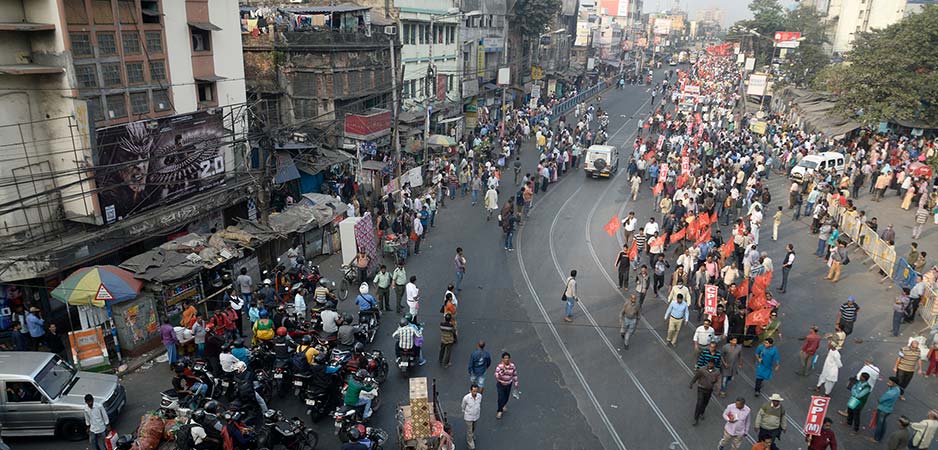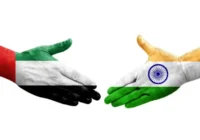I recently reviewed commentaries on the Indian Supreme Court’s decision regarding the right to the title (ownership) over a piece of land in Ayodhya where the Babri mosque was built under the Mughal rule of Zahiruddin Babur more than 400 years ago. It is a spot that Hindus believe was the exact place where one of their deities, Lord Ram, was born.
The unanimous verdict of five judges — including one Muslim, S.A. Nazeer — granted that site to Hindus by inventing legal fiction recognizing Ram as the original owner of that land. The claim of the Indian Muslim parties, through the Sunni Waqf Board, that it was the title holder was rejected.
In doing so, the court has created Lord Ram as a historical person, although no date could be ascertained as to when he was born. I have heard Hindu sadhus (holy men) say it was thousands of years ago, some even further back in time. The literature available on him does not uphold any such claim. Even Mahatma Gandhi talked about the legend of Ram as mythical, but now after the court ruling, the Hindu god attains a tangible historical existence.
There are perhaps millions of Hindus of the Khatri caste and sub-castes such as Malhotras and others who claim to be descendants of Lord Ram, and in recent weeks one woman claimed she was a direct descendant of Ram. I thought only in Pakistan did we have millions of people claiming descent from Prophet Muhammad.
To my surprise, a certain Prince Tousy, claiming to be the direct descendant of Emperor Babur and thus entitled to the throne of the Mughal Empire — which ruled most of South Asia in the 16th and 17th centuries — was also on an Indian TV channel. He said he had the right to ownership of the land, but he had decided to donate that site to the government of India. In Pakistan, we have millions of people claiming to be descendants of Mughals. So, now one tiny piece of land — less than 3 acres — has potential claimants all over the Indian subcontinent.
The Court Ruling
Keeping all this in mind, we should note that the court agreed upon certain issues. First, in 1949, through a clandestine operation masterminded by Hindu nationalists, the statues of Ram and other Hindu deities were placed inside the vicinity of the Babri Masjid. Up until this point, Muslims performed their prayers at the mosque for generations.
Second, on December 6, 1992, Hindu nationalists of the Sangh Parivar, the Vishwa Hindu Parishad, Rashtriya Swayamsevak Sangh (RSS) and other such forces joined ranks to destroy the Babri mosque. This took place when a Congress party government under Narasimha Rao was in power in New Delhi. Leading Hindu nationalists such as Lal Krishna Advani, Murli Manohar Joshi and others led that countrywide yatra (long march), mobilizing Hindus looking for revenge and to settle scores due to Babur and other Muslims who had invaded India, destroyed temples and oppressed Hindus. On that day, not only was the mosque severely damaged, but rioting took place and at least a thousand Muslims were killed.
The Supreme Court declared both these incidents as criminal acts. Those cases are still pending a decision of the courts.
Asaduddin Owaisi, a prominent Muslim leader, made the interesting point that, had the 1992 incident not taken place, would the Supreme Court have reached a decision in favor of Hindus, whose action in attacking the Babri mosque is described as a criminal offense? Obviously, the court has handed down a controversial ruling: It has legalized what it described as a criminal act.
Now, let me say that the Supreme Court has gone to great lengths in its deliberations and has tried to compensate Muslims by allocating five acres of land in Ayodhya to build a mosque. Understandably, the court was under tremendous pressure to give in to claims of Hindus who were openly and brazenly backed by the ruling Bharatiya Janata Party (BJP) and the RSS.
The Reaction
Some people were hoping the Supreme Court would uphold the verdict of the Allahabad High Court, which had divided the disputed site into three portions equally but of which the Muslims were given one-third. Now, they are completely excluded but are compensated with five acres at another place but within Ayodhya.
One argument the Supreme Court especially took into account was that whereas for Hindus that site enjoys a very special status as the birthplace of Lord Ram the Babri mosque did not represent an equivalent sacred status for Muslims.
The Muslim response has been mixed. The mature and wiser sections realize that this is a different India — the erstwhile India that Jawaharlal Nehru and Mahatma Gandhi wanted to establish is virtually no more. The only thing that stands in the way of India formally becoming a Hindu rashtra (nation-state) is the Indian Constitution.
Under these circumstances, their view is to accept the verdict and move on. Others have said that while the court is supreme, it is not infallible. I think this is a correct and legitimate description of the unanimous decision of the court. There is the possibility of urging a review of the verdict, but I think most Indian Muslims would not press for it.
Commentators have wondered if the Ayodhya verdict will set a precedent and be applied to other disputed sites in India. I read some time back that Hindus claim that 3,000 mosques standing today are built on Hindu temples.
Obviously, the BJP and RSS are in a triumphant mood, and this can be very frightening for the Muslim minority in India. Hindu majoritarianism is a fact. The implications and ramifications of the Supreme Court ruling remain to be seen.
Some of the reactions in Pakistan have been unfortunate. First, some people have written that since Muslims have over the centuries destroyed temples and other sacred places of non-Muslims, then it is good that old scores are being settled now. Second, the other and more disappointing reaction has been to assert that Indian secularism was a sham and now no confusion remains anymore.
The first position I consider very dangerous because if past wrongdoings are to be corrected today, then is it fair to avenge those misdeeds and lay the blame on present generations of Muslims? The second position is pathetic because it ignores the fact that in the undermining of the Indian secular project, Muhammad Ali Jinnah — the man who founded Pakistan — and his two-nation theory played a vicious role. In Pakistan, we have destroyed not only Hindu temples, but also set fire to Christian churches, bulldozed the graveyards of the minority Ahmadis and much worse.
It is no wonder that the BJP’s Lal Krishna Advani and Jaswant Singh wrote laudatory books on Jinnah calling him a true nationalist and secularist. Those books were actually meant to discredit Nehru and to make nationalism and secularism combine with religion to justify India as a Hindu rashtra.
At present, that project is definitely winning, but nobody can foresee or predict with any confidence what consequences will follow in the long run. Right now, India has hit the rock bottom. We did that already in 1947.
The views expressed in this article are the author’s own and do not necessarily reflect Fair Observer’s editorial policy.
Support Fair Observer
We rely on your support for our independence, diversity and quality.
For more than 10 years, Fair Observer has been free, fair and independent. No billionaire owns us, no advertisers control us. We are a reader-supported nonprofit. Unlike many other publications, we keep our content free for readers regardless of where they live or whether they can afford to pay. We have no paywalls and no ads.
In the post-truth era of fake news, echo chambers and filter bubbles, we publish a plurality of perspectives from around the world. Anyone can publish with us, but everyone goes through a rigorous editorial process. So, you get fact-checked, well-reasoned content instead of noise.
We publish 2,500+ voices from 90+ countries. We also conduct education and training programs
on subjects ranging from digital media and journalism to writing and critical thinking. This
doesn’t come cheap. Servers, editors, trainers and web developers cost
money.
Please consider supporting us on a regular basis as a recurring donor or a
sustaining member.
Will you support FO’s journalism?
We rely on your support for our independence, diversity and quality.






